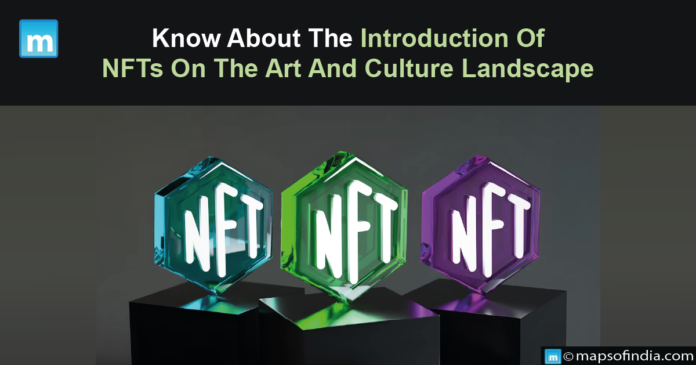In recent years we witnessed a new phenomenon that has taken the art world by storm, i.e., Non-Fungible Tokens (NFTs). NFTs have emerged as a game-changer, revolutionizing how we perceive and engage with art and culture. By providing digital proof of ownership and uniqueness, NFTs have opened up a new realm of possibilities for artists, collectors, and enthusiasts alike. This blog aims to delve into the introduction of NFTs and their profound impact on the art and culture landscape.
Understanding Non-Fungible Tokens (NFTs)
NFTs are unique digital assets stored on a blockchain, typically the Ethereum blockchain. Unlike cryptocurrencies such as Bitcoin, which are fungible and interchangeable, NFTs are indivisible and possess distinct characteristics that set them apart. NFTs provide proof of ownership, provenance, and scarcity, making them ideal for digital art, collectibles, music, and more.
Artists and Creators Empowered
NFTs have provided artists and creators unprecedented opportunities to monetize their work directly. By selling their art as NFTs, artists can retain control over their creations, receive royalties on secondary sales, and reach a global audience without relying on traditional gatekeepers. This democratization of the art world has empowered emerging artists and give them a platform to showcase their talent.
Digital Art and NFTs
NFTs have revolutionized digital art by addressing the long-standing challenge of ownership and provenance. Before NFTs, digital art could be easily copied and shared without any attribution to the original artist. With NFTs, artists can now prove authenticity, track ownership, and even embed smart contracts to receive royalties each time their art is sold.
Collectibles and NFTs
Collectibles have always been integral to human culture, from trading cards to stamps. NFTs have brought the concept of collectibles into the digital age. Through NFTs, collectors can own and trade unique digital assets, from virtual trading cards and real estate to virtual fashion items. NFT collectibles offer a new level of interactivity and engagement with the audience, fostering a sense of community among collectors.
Music and NFTs
The music industry has also witnessed the impact of NFTs. Artists can now release exclusive songs, albums, and experiences as NFTs, allowing fans to own a piece of music history. NFTs offer a new revenue stream for musicians, as they can earn royalties each time their music is bought, sold, or streamed.
Cultural Preservation and NFTs
NFTs have the potential to revolutionize cultural preservation. By digitizing and tokenizing cultural artefacts, monuments, and landmarks, NFTs enable broader access and appreciation. Additionally, NFTs can be used to fund conservation efforts, ensuring the longevity and preservation of our shared cultural heritage.
Challenges and Future Prospects
While NFTs hold immense potential, they also face challenges. Environmental concerns regarding the carbon footprint of blockchain transactions need to be addressed. Moreover, copyright infringement and intellectual property rights issues need careful consideration to protect artists and creators.
The future prospects of NFTs in the art and culture landscape are promising. As technology advances, NFTs can enable immersive virtual experiences, augmented reality (AR) integration, and even cross-platform interoperability, creating entirely new forms of artistic expression.





